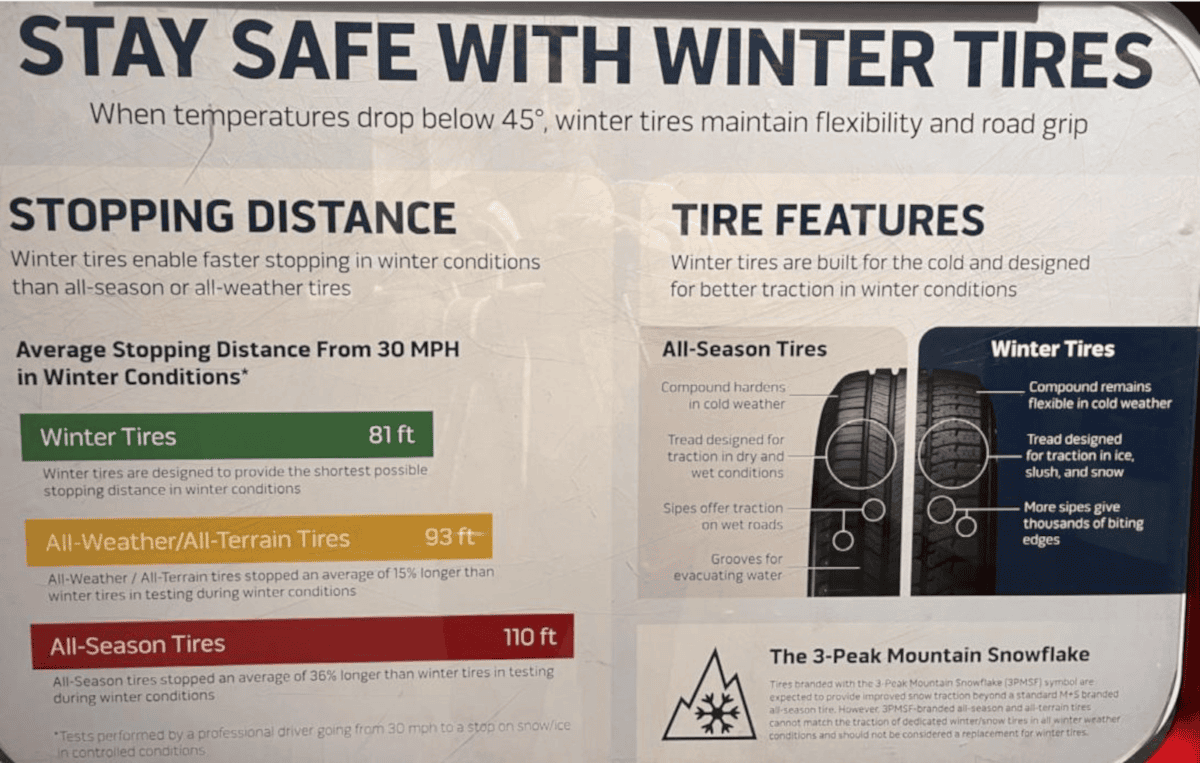image: Ford
On the forums lately, I’ve been seeing more questions about if owners will be “OK” driving through the winter weather in their Bronco Sport. I’ve been surprised at some of the responses, ranging from “send it” to confusion about 4-wheel drive to stories of how people got stuck or slid off the road. I’m sure these questions are in response to imminent winter storms hitting much of the U.S. and Canada this week and owner’s concerns about how their new Bronco Sport baby will behave.
This is a good question to ask but, as with most questions, the actual answer is not a clear-cut “yes” or “no” but “it depends.” There are several variables regarding the trim of your Bronco Sport, what tires are on it, your winter driving experience, and the weather severity. Let’s discuss each point and the things you need to consider before venturing out.
What trim do you have?
Not all Bronco Sports are built the same. The Badlands model is the most capable. It has an additional inch of ground clearance, A/T tires, and additional G.O.A.T. Modes. Of course, we add the First Edition and Heritage Limited to that grouping, but not the Heritage or Free Wheeling, which are trims based on a Big Bend.
Bronco Sports have a terrain management system based on the G.O.A.T. Mode selected. With a Badlands, you can manage terrain by selecting a G.O.A.T. Mode or pushing the 4x4 button. When Slippery Mode or the 4x4 button is selected on the Badlands trim, the vehicle software understands you are asking for traction over handling and sends power to the front and rear wheels.
What’s the best G.O.A.T. Mode for winter weather?

According to the Bronco Sport manual, the best option is the Slippery Mode, “For less than ideal road conditions such as snow or ice covered roads. You can use this mode for crossing terrain where loose, wet or slippery materials cover a firm surface. Slippery mode lowers throttle response and optimizes shifting for slippery surfaces.” In snow conditions or driving through unplowed areas, Sand Mode may work better short term, but the manual warns that Sand Mode should never be used on dry pavement, because of driveline bind-up and the potential for accelerated tire and vehicle wear.
What tires are on the vehicle?
One of the biggest factors in determining whether your Bronco Sport will get you where you need to go are the tires. The kind you have can make a huge difference in the snow. Big Bend models are often equipped with the Continental ProContact All Season tires, which are described as “acceptable performance in light winter conditions, and capable of providing traction in winter.”
There is a Pirelli option for the Badlands, the Scorpion ATR, that is also an all-season tire, with the addition of it being an all-terrain tire. Although there is a more aggressive tread pattern, in the snow, winter handling will not be optimal.

The WildPeak AT3s, an option on the pre-2024 Badlands trim, are the most off-road capable tire offered. These have the Three-Peak Mountain Snowflake Symbol (3PMSF), meaning they are expected to offer more snow traction that a standard M+S branded all-season tire.
If you’re going to be doing a lot of winter driving, you may want to consider putting winter tires on your Sport that have tread specifically designed for traction in ice, slush, and snow, made with a compound that remains flexible in cold weather, and has more sipes to provide biting edges and greater traction.

How you drive can make a huge difference
There are driving techniques that will work better for you in inclement weather. One is to simply slow down and not make any sudden drastic moves, which includes your steering as well as on your accelerator and brake. Think smooth driving.
If your Bronco Sport does start to skid, do not hit the brakes. Ease off the accelerator and turn the vehicle in the direction of the skid. Once you regain traction, you can turn back to your desired direction.
If needed, lean into your anti-lock braking system (ABS). It might prevent, or at least slow, the impact if an accident is imminent. That means keeping your foot firmly on the brakes and letting the software do its work. Don’t let up and continue to try and steer to avoid a collision.
Keep increased distance from the vehicle in front of you and regularly test the traction of the road surface. When no other traffic is around you, lightly touch the brakes for a second or two. If you feel that ABS kicking in (a pulsing sensation), you know that you’re on a really slick surface and will need increased time and distance to stop.
It is okay to commute with my traction boards?
Absolutely. They look cool, and they’ll also have you more prepared for recovery in the snow. Take a shovel, take your tow strap, have some snacks and water, and throw in a sleeping bag.
How severe is the weather?
My dad used to say that having a 4x4 just means you get stuck farther from home. It’s something to laugh about, as dad sayings often are, but there is a point to his message. If it’s the apocalyptic blizzard or an ice storm in Georgia, not only is it going to be too much for your Bronco Sport, but also others on the road (think tiny car with balding tires) that are much less prepared than you, and you’ll find yourself blocked in behind them when an accident happens. Know your limits, watch the weather, and stay home if it’s too much.
Interested in mastering off-roading in the snow? Check out these Bronco winter driving tips.
Want a first-hand perspective on winter driving? Read this next article, Bronco Nation Member Spotlight: Winter Driving Edition.

Comments
You must log in or register to post here.